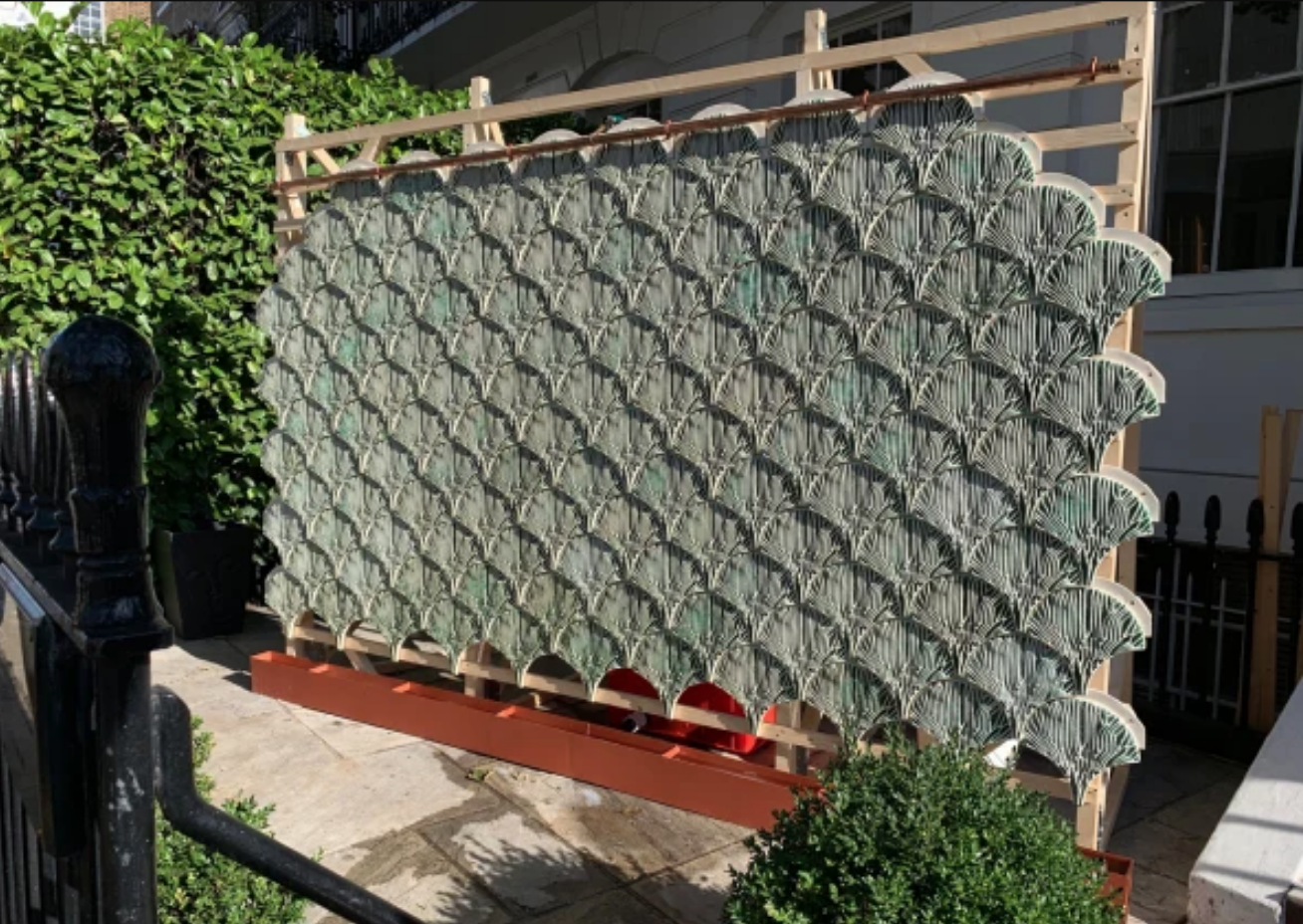Good News
Indian Architect Creates New “Algae Tiles” That Can Scrub Toxins, Pollution From Wastewater

(TMU) — An Indian architect has created a new ceramic- and algae-based tile that can be made into walls that purify waters polluted by dyes and chemicals.
Shneel Malik, a doctoral candidate at the Bartlett School of Architecture in London, developed the modular wall system dubbed Indus due to India’s ongoing problem with water polluted by toxic dyes and heavy metals, India Times reports.
When Malik, who hails from New Delhi, traveled to other parts of the country in 2016, she noticed that many small-scale jewelry workers and textile dyers were releasing such toxic chemicals as cadmium, lead and arsenic into local waters, polluting not only water sources but also the soil, air, and communities living there for entire generations.
Artisan and industrial textile production has long been a crucial pillar of the South Asian subcontinent’s culture, drawing travelers from afar for centuries while contributing 15 percent to the export earnings of India in 2017-2018. However, due to India’s decades of lax environmental regulation and poor social development in rural regions, over 70 percent of the country’s water resources are contaminated due to a lack of treatment for wastewater discharge – and according to Yanko Design, 40 percent of wastewater is generated by artisan industries.
Malik told Fast Company:
“With the support of NGOs such as Pure Earth and CEE in India, who are involved in tackling pollution, we were able to visit multiple sites in Kolkata (bangle-makers) and Panipat (textile dyers) in India.
These site visits made us better understand the site- and context-specific constraints and challenges in wastewater treatment. Neither the artisan workers have any space available for Westernised high-tech water treatment solutions, nor do they have the economic capacity to get additional support.”
So Malik began to work on a project that would not only address the problems of water and soil pollution but would also be simple technologically and affordable for India’s largely impoverished rural villages. She explained:
“We started to design a system—which is both spatially compatible, but more importantly can be constructed and maintained by the artisans themselves.”
The tile-based, modular bioreactor wall system is able to comprehensively clean water through a process of bioremediation. The basis of this process is found in algae, a single-celled and non-flowering organism that is incredibly common across ocean beds. The algae is capable of filtering out or sucking in toxic chemicals by releasing microorganisms known as phytochelatins, which trap pollutants and feed on them as a source of nutrition that spurs growth.
This allows the water to be freed of any impurities like cadmium or lead, which can then aid in the sustenance of the algae lining Malik’s Indus tiles.
The algae is applied to the architectural tiles in the form of a hydrogel and can be used for at least a couple of months until it becomes saturated with toxic materials. The tiles themselves are made from locally available clay, and the pilot set of Indus tiles were produced in the artisanal workshops of Khurja, known as the ceramic capital of India.
Polluted water is then poured through the inlets at the top of the modular wall, which then allows the water to flow through the vein-like channels of the tiles, which also resemble leaves. Depending on the level of contamination, the water can then be recirculated to ensure further purification.
Malik said:
“We conducted lab tests to understand the heavy-metal uptake by the microalgae when encapsulated within the biomaterial. This allowed us to identify certain design parameters allowing for optimum water-algae contact.
Further, while we were generating sets of computational simulations, we identified the similarity of the patterns generated to the veins of a leaf, which have evolved to equally distribute water and nutrients across the entire plant. We then amalgamated the two, into the leaf tiles that were exhibited at [London Design Festival]. The venations further add to the modularity of the system, where we can generate different venation systems specific to their heavy-metal contaminant.”
Malik and her team are now focusing on ensuring that they can make the system even more sustainable, so that the tiles can be used to detoxify water on a long-term basis in order to keep costs low for those who would benefit the most from the Indus system.
By Elias Marat / Creative Commons / TheMindUnleashed.com
Typos, corrections and/or news tips? Email us at Contact@TheMindUnleashed.com
